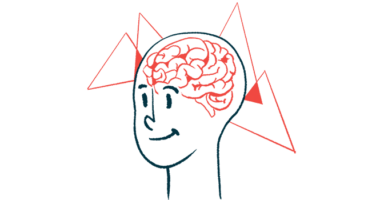Twins offer insights into DM1 cognitive deficit contributors
Lifestyle, environment help shape brain development, said researchers

A pair of identical twins with myotonic dystrophy type 1 (DM1) were found to have different deficits in social cognition that corresponded with differing patterns of brain tissue loss on MRI scans, a case report shows.
Researchers believe the findings highlight that, while genetic factors can contribute to brain development, differences in lifestyle and environment can also shape cognition. The study, “Different neuropsychological and brain volumetric profiles in a pair of identical twins with myotonic dystrophy type 1 indicate a non-genetic modulation of clinical phenotype,” was published in Neuromuscular Disorders.
DM1 is a typically adult-onset form of muscular dystrophy (MD) caused by mutations in the DMPK gene. As with other types of MD, muscle weakness and wasting are its hallmark symptoms, but cognitive dysfunction is also described.
Particularly, social cognition — the set of cognitive functions associated with relating to others, emotional processing, and empathy — is substantially impaired in DM1, the researchers said. These issues have been linked to tissue loss, or atrophy, in brain regions involved in this type of cognitive processing.
Brain development involves a complex interplay between genetic factors and a person’s environment through life. As such, it’s not clear to what degree the neurological changes in DM1 can be linked to each factor.
Genetic, environmental contributions to DM1
Identical twins offer a unique way to make these distinctions. Twins will largely have the same genetics, but factors within their environment can differ.
The identical twin sisters described here started having grip myotonia, a DM1 symptom wherein the muscles have trouble relaxing, in their 20s. They also had a family history of the disease.
The women had grown up together, but their social environments were different. The twins, age 29 at the time of the report, attended different schools, had their own friends, and were involved in different activities.
Genetic testing confirmed the DM1 diagnosis in both women, who were found to have a similar degree of muscular impairments.
Each twin had a normal IQ, indicating no general intellectual disabilities, but both performed abnormally in tests of decision-making and certain social tests.
One twin seemed to have greater deficits in processing the emotional states of others. She exhibited abnormal performance on several tests related to identifying the emotional state of male faces and in recognizing others’ feelings of anger or disgust.
Her sister had more normal emotional processing, but had impairments in cognitive aspects of social processing, particularly in theory of mind, which refers to a set of social-cognitive skills that help a person infer what others might be thinking or feeling.
These differences corresponded with different findings on MRI scans related to the volume of gray matter, a type of brain tissue that contains mostly nerve cell bodies, in certain brain regions.
The twin who showed impaired emotional processing had greater loss of gray matter in the amygdala and hippocampus, which are involved in processing emotional states. Her sister, who had impairments in cognitive aspects, showed more gray matter loss in a part of the prefrontal cortex involved in that type of processing.
About white matter, or brain tissue that contains mostly nerve cell projections, both women had a similar pattern of tissue loss across multiple brain regions involved in cognitive function.
The researchers believe gray matter atrophy, which appeared to be linked to different social cognition deficits in the women, may be influenced more by the environment.
“[White matter] atrophy might be equally influenced by both genetics and environmental factors, while [gray matter] atrophy might be more influenced by environmental factors such as education and social events experienced during lifetime,” wrote the researchers, who said areas of overlap in brain atrophy could help explain some of the cognitive and social deficits shared between the sisters. “These observations might be relevant when planning possible interventions to be offered to DM1 patients soon after the diagnosis.”







